Microbial activity in the dark ocean
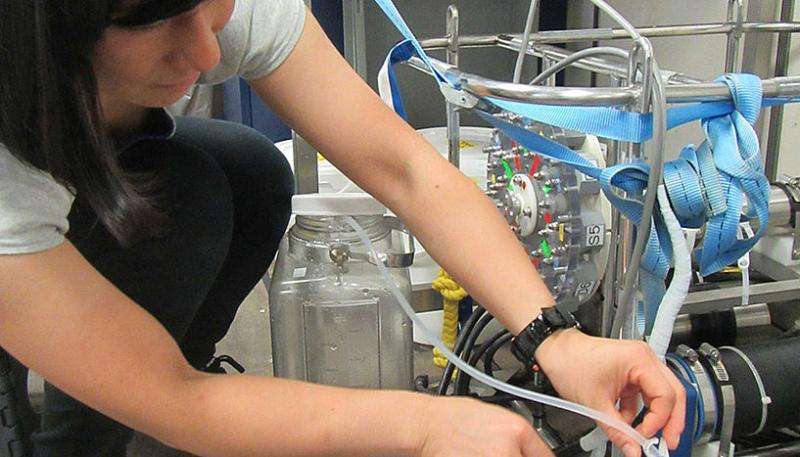
There are a lot of tiny living organisms in the dark ocean. Imagine their habitat, it is completely different from ours! During this cruise I am measuring the activity of microorganisms using a device called the In Situ Microbial Incubator or ISMI in short.
The dark ocean is characterized by very low temperature – around 4 degrees Celsius – and high pressure. The average depth of the world oceans is 4.000 metres and pressure is increasing by about one bar every ten metre depth. Thus, some of these microorganisms have to withstand pressures of 400 bar and more.
What is the ISMI?
Essentially, the ISMI is a set of tubes and pumps with which I can collect water at a given depth – typically between 1.000 and 4.000 metres – and enclose the microbes in the tubes. At these depths, there are still at least ten thousand microbes per cubic centimetre present. To the tubes containing the water with the microbes labelled amino acids are added in trace concentrations, which are taken up by the heterotrophic microbes. The uptake of this labelled substrate can be measured directly on board of the Research Vessel "Sonne".
These measurements allow an estimate of the microbial activity under the pressure conditions at the depth of sampling. Comparative measurements under decompressed conditions are done as well. For that, the samples, which have been collected at depth, are brought on board prior to performing these measurements. The microbial activities measured at depth and under decompressed conditions are compared. This approach allows us to determine how many microbes living in the dark ocean are actually adapted to the high-pressure conditions and how many of these dark ocean microbes would do better under lower hydrostatic pressure.
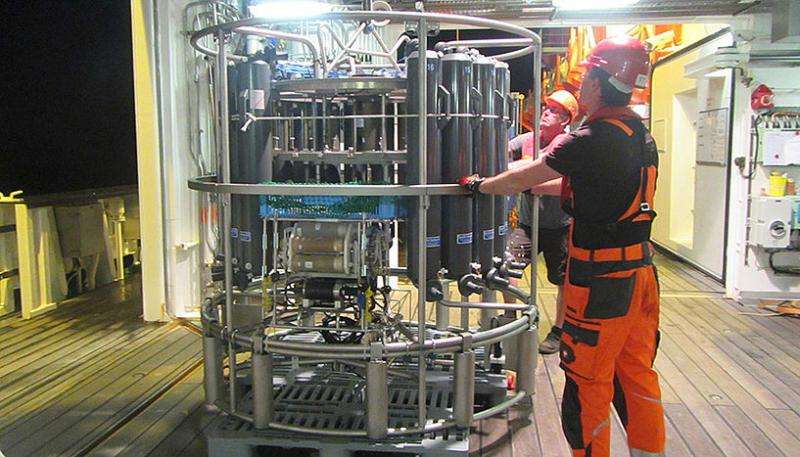
Time for deployment!
Last week, we mounted the ISMI onto the CTD frame and deployed it at 2.000 metres. The incubations for my measurements are long so the ship had to stay at station for eight hours. For the "Sonne" this is quite easy as it has a neat positioning system with several propellers allowing her to stay exactly at a certain location. Now my colleague is analyzing the sample. Let's see whether the microbial activity is higher under pressure conditions of the deep sea or under decompressed conditions.
-
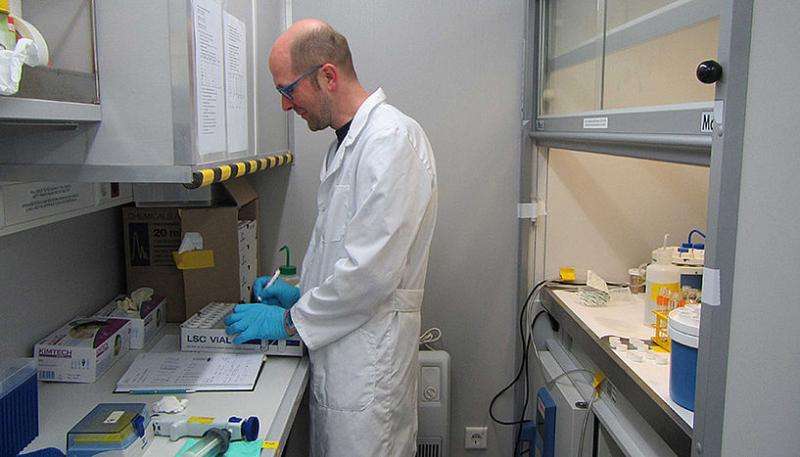
Thomas Reinthaler preparing samples for measuring microbial activity after recovering the ISMI. Credit: University of Vienna -
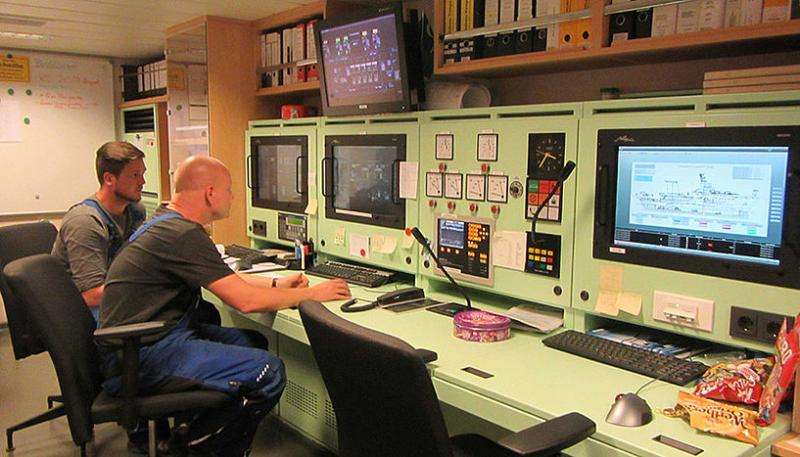
Engineers in the engine room. Credit: University of Vienna -
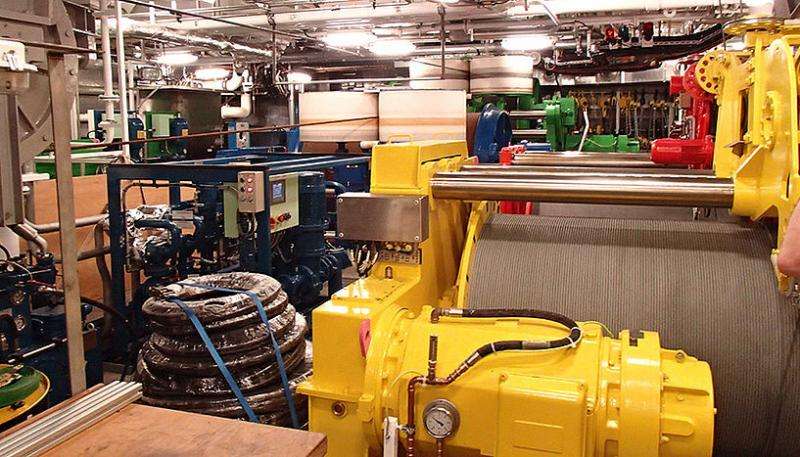
The winch room. Credit: University of Vienna
Provided by University of Vienna


















